Phone Comparisons: Samsung Galaxy S25 Edge Vs Google Pixel 8 Pro Specs
Contents
We’ve recently compared the Samsung Galaxy S25 Edge with one of Google’s current-gen flagships, the Pixel 9 Pro. Now it’s time to do the same for an older Pixel flagship. We’ll be comparing the Samsung Galaxy S25 Edge vs Google Pixel 8 Pro specs. The Pixel 8 Pro was Google’s most powerful phone a year prior to the Pixel 9 series, and it’s still a very compelling device.
The Galaxy S25 Edge is a much newer device, as it arrived earlier this month. It’s the company’s ultra-thin phone, which did manage to attract a lot of attention. It’s considerably different than the Pixel 8 Pro, though. We’ll first list their specifications, and will then move to compare the two phones across a number of other categories. Let’s get to it.

Samsung Galaxy S25 Edge
![]()
Google Pixel 8 Pro
| Samsung Galaxy S25 Edge | Google Pixel 8 Pro | |
|---|---|---|
| Dimensions | 158.2 x 75.6 x 5.8 mm | 162.6 x 76.5 x 8.8 mm |
| Weight | 163 grams | 213 grams |
| Display | 6.7-inch LTPO AMOLED 2X | 6.7-inch LTPO OLED |
| Refresh rate | 1-120Hz (adaptive) | 1-120Hz (adaptive) |
| Resolution | 3120 x 1440 | 2992 x 1344 |
| Chipset | Qualcomm Snapdragon 8 Elite for Galaxy | Google Tensor G3 |
| RAM | 12GB (LPDDR5X) | 12GB (LPDDR5X) |
| Storage | 256GB/512GB (UFS 4.0) | 128GB/256GB/512GB/1TB (UFS 3.1) |
| Main camera | 200MP (wide, f/1.7 aperture, 1/1.56-inch sensor size, OIS, PDAF) | 50MP (f/1.7 aperture, 1/1.31-inch sensor size, 1.2um pixel size, dual pixel PDAF, OIS) |
| Ultra-wide camera | 12MP (f/2.2 aperture, PDAF) | 48MP (f/1.7 aperture, 1/2-inch sensor size, 126-degree FoV, dual pixel PDAF) |
| Telephoto camera | N/A | N/A |
| Periscope telephoto camera | N/A | 48MP (f/2.8 aperture, 1/2.55-inch sensor size, dual pixel PDAF, OIS, 5x optical zoom) |
| Selfie camera | 12MP (wide, f/2.2 aperture) | 10.5MP (f/2.2 aperture, 1/3.1-inch sensor size, 1.22um pixel size, PDAF) |
| Battery size | 3,900mAh | 5,050mAh |
| Charging | 25W wired, Qi wireless (charger not included) | 30W wired, 23W wireless (Pixel Stand), 15W wireless (Qi), 5W reverse wired (charger not included) |
| Colors | Titanium Icyblue, Titanium Silver, Titanium Jetblack | Obsidian, Porcelain, Bay, Mint |
Samsung Galaxy S25 Edge vs Google Pixel 8 Pro: Design
There are a couple of similarities here when it comes to design, but not many. Both phones do have flat displays, uniform bezels, and a centered display camera hole up top. That’s basically where similarities end, though. The bezels around the Galaxy S25 Edge’s display are thinner, and the corner curvature is a bit different too. The Galaxy S25 Edge has the power/lock button below the volume rocker buttons on the right side, while it’s the other way around for the Pixel 8 Pro.
Samsung’s handset also has a flat frame all around. The same cannot be said for the Pixel 8 Pro. That phone has a slightly rounded frame. Not even the materials are the same. The Galaxy S25 Edge uses titanium for its frame, while the Pixel 8 Pro uses aluminum. There are glass backplates on the back of both phones, and they are, in fact, both Gorilla Glass Victus 2, but different. The one on the Galaxy S25 Edge is flat, while the Pixel 8 Pro’s curves towards the edges.
Speaking of backplates, the camera islands are different too. The Galaxy S25 Edge’s sits in the top-left corner, with two vertically-aligned cameras. The Pixel 8 Pro has a camera visor on the back, which connects to the frame on the left and right sides. It spans across the phone’s back, towards the top. The Pixel 8 Pro actually has one extra camera on the back, a total of three. Both camera setups protrude on the back.
These two phones are IP68 certified, which means that they’re water and dust resistant. They have identical display sizes, but the Galaxy S25 Edge is a bit shorter and narrower, mainly due to bezel thinness. It is also a lot thinner, as that’s its main selling point. The Pixel 8 Pro is still plenty thin, though. The Galaxy S25 Edge weighs 163 grams compared to 213 grams of the Pixel 8 Pro.
Samsung Galaxy S25 Edge vs Google Pixel 8 Pro: Display
There is a 6.7-inch Dynamic AMOLED 2X display included on the Galaxy S25 Edge. That panel is flat, and it has an adaptive refresh rate (1-120Hz). HDR10+ content is supported, and the screen-to-body ratio is at around 92%. The display aspect ratio is 19.5:9, while the screen resolution here is 3120 x 1440. The Galaxy S25 Edge’s display is protected by the Gorilla Glass Ceramic 2.

On the other hand, the Google Pixel 8 Pro has a 6.7-inch LTPO OLED display. That display is also flat, and it supports an adaptive refresh rate (1-120Hz). HDR10+ content is supported, while the peak brightness here is 2,400 nits. The screen-to-body ratio is at around 87%, while the display aspect ratio is 20:9. The screen resolution here is 2992 x 1344. This display is protected by the Gorilla Glass Victus 2.
Both of these displays are really good. The Galaxy S25 Edge does get a bit brighter, but both are bright enough. They’re also vivid and have great viewing angles. The touch response is also quite good, while the blacks are deep on both panels. You won’t lack sharpness on either of them, either. They also have good display protection.
Samsung Galaxy S25 Edge vs Google Pixel 8 Pro: Performance
Qualcomm’s Snapdragon 8 Elite for Galaxy chip fuels the Galaxy S25 Edge. That is an overclocked variant of Qualcomm’s most powerful processor. It’s a 3nm chip, in case you were wondering. It is paired with 12GB of LPDDR5X RAM and UFS 4.0 flash storage. The Google Pixel 8 Pro, on the flip side, is fueled by the Google Tensor G3 processor. That is a 4nm chip, and it is paired with 12GB of LPDDR5X RAM here, along with UFS 3.1 flash storage. Neither phone supports storage expansion.
The Google Pixel 8 Pro is an older phone with an inferior chip, but it does a very good job performance-wise. The Galaxy S25 Edge does feel a bit snappier in day-to-day use, but the Pixel 8 Pro is snappy enough. Quite frankly, both offer really good performance in day-to-day tasks, ranging from opening apps, multitaskin,g and consuming multimedia to messaging, emails, and so on.
The Galaxy S25 Edge is technically the better option for gaming, though it does generate more heat than its siblings. That is probably due to its thinness. You can still play demanding games without a problem, just note that the phone does get quite warm after a while, based on what we’ve seen. The Pixel 8 Pro is not a gaming phone, and it is inferior when it comes to high-end games, but everything else runs great on the device, without a problem.
Samsung Galaxy S25 Edge vs Google Pixel 8 Pro: Battery
The Galaxy S25 Edge packs in a 3,900mAh battery, while the Pixel 8 Pro has a 5,050mAh unit. That 3,900mAh battery is considered to be tiny for that phone, and it is. Samsung should have used a silicon-carbon battery to increase capacity while keeping the same battery size, but the company didn’t do that. It ended up with a battery that is too small for that display size and sheer power that the phone offers.
No, the Galaxy S25 Edge battery life is not great. If you’re a power user, you won’t be able to get to the end of the day with the phone. If you’re a light user, however, that may happen. The Pixel 8 Pro does offer better battery life, even though it’s not the best in that regard, considering the competition. We still didn’t review the Galaxy S25 Edge, so you can expect to see more detailed information about its battery life in the near future.
Samsung’s handset supports 25W wired and 15W wireless (Qi2 Ready) charging. The Pixel 8 Pro, on the flip side, supports 30W wired, 23W wireless (Pixel Stand), 15W Qi wireless, and reverse wireless charging. The Galaxy S25 Edge takes a couple of minutes over an hour to fully charge, while it takes the Pixel 8 Pro around an hour and 20 minutes. Do note that neither of these two smartphones comes with a charger in the box.
Samsung Galaxy S25 Edge vs Google Pixel 8 Pro: Cameras
The Samsung Galaxy S25 Edge has two cameras on the back. A 200-megapixel main camera (f/1.3-inch sensor size) is included, along with a 12-megapixel ultrawide unit (1/2.55-inch sensor size). On the flip side, the Pixel 8 Pro has three cameras on the back. A 50-megapixel main camera (1/1.31-inch sensor size) is backed by a 48-megapixel ultrawide unit (1/2.0-inch sensor size, 126-degree FoV), and a 48-megapixel periscope telephoto camera (1/2.55-inch sensor size, 5x optical zoom).

Both of these phones do a good job when it comes to photos, but they do provide different images. Even though both of them like to emphasize colors, the Pixel 8 Pro shots are more contrasty in comparison. Both main cameras do a great job of capturing detailed shots, even though neither is particularly accurate. That’s not necessarily a bad thing, as people tend to love these processed shots. Both main cameras also do a great job in low light.
Ultrawide cameras are good on both ends, but the Pixel 8 Pro’s does stand out. It does provide more details and does a better job in low light. Telephoto shots are not even a comparison, as the Galaxy S25 Edge does not have a telephoto or periscope telephoto camera. The Pixel 8 Pro wins in that category, easy, for anything 3x and above.
Audio
Both of these phones have stereo speakers, and while the audio output is good on both, it’s not particularly loud. It’s loud enough, but not loud to the level of most other smartphones on the market (in that segment).
There is no audio jack on either phone. You can, however, utilize Type-C ports on both phones in order to connect your wired headphones. Bluetooth 5.4 is supported on the Galaxy S25 Edge, while the Pixel 8 Pro offers Bluetooth 5.3 support.
What’s your reaction?
Love0
Sad0
Happy0
Sleepy0
Angry0
Dead0
Wink0
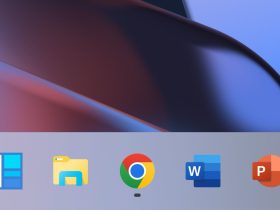
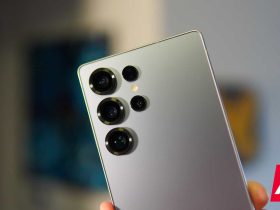
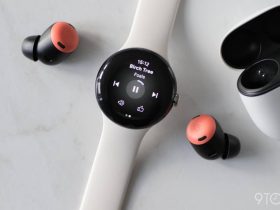
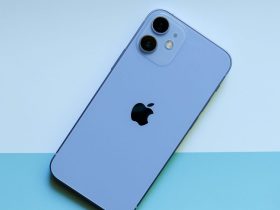


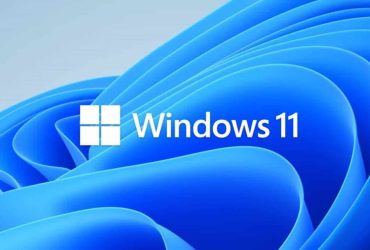

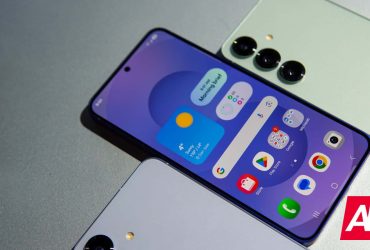
Leave a Reply
View Comments